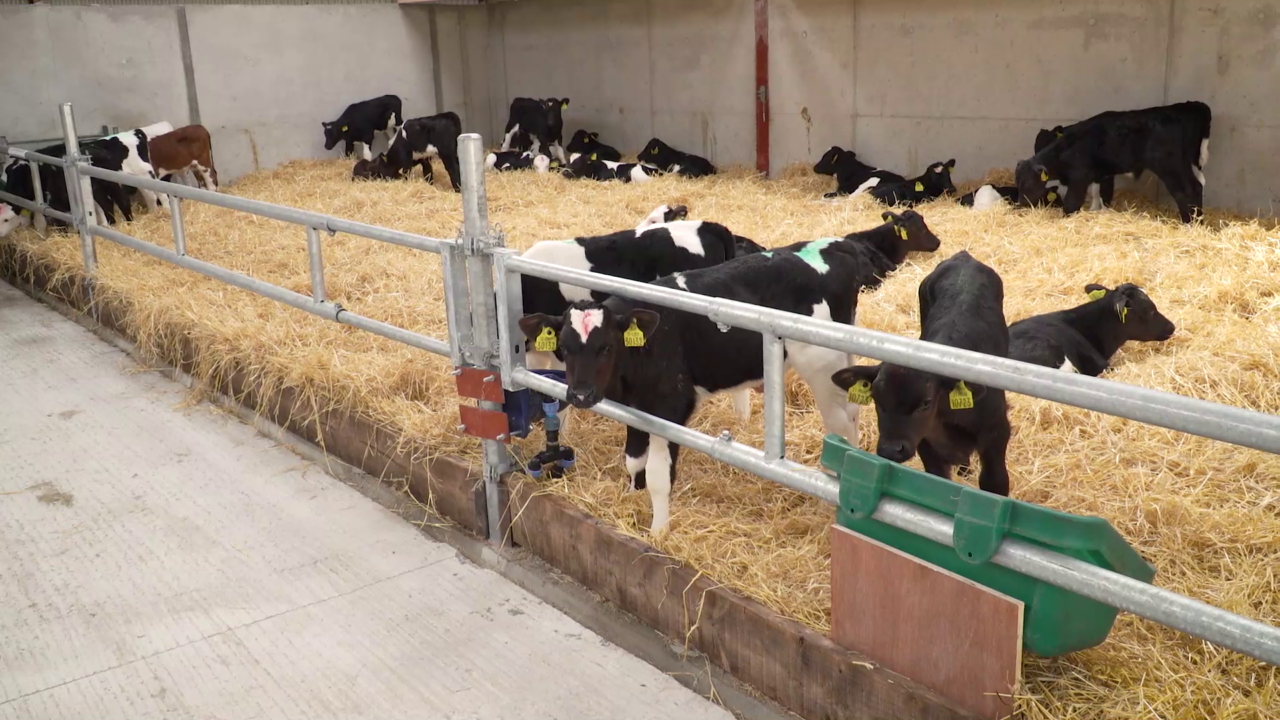By Teagasc Green Acres Calf to Beef Programme advisor Seán Cummins
With the development of antimicrobial resistance, there’s an increased focus on the way in which antibiotics are being used in both human and animal health.
Peter and Thomas O’Hanrahan, participants in the Teagasc Green Acres Calf-to-Beef Programme, have recorded a significant reduction in the quantity of antibiotics being used on their farm on the outskirts of Thomastown, Co. Kilkenny.
Expressed on a milligram per kilogram of liveweight output basis, the O’Hanrahans used 6.4mg/kg of liveweight output in 2020, down from 57.5mg/kg of liveweight output in 2018 – a reduction of 89%.
How has this reduction been achieved?
This reduction has been achieved through careful planning and alterations in management approaches on-farm.
There are a number of key factors and practices which have led to the O’Hanrahans reducing their antibiotic usage, including: the implementation of a vaccination programme; the development of suitable calf-rearing facilities; and an increased focus on purchasing calves off-farm.
Vaccination programme
The O’Hanrahans have taken a ‘prevention is always better and cheaper than the cure’ approach when it comes pneumonia on their farm. Vaccinating calves is the best policy to ensure this happens and a regimental plan is being implemented on the Thomastown-based holding.
There are several pneumonia vaccines on the market today. Some are for the common bacteria that cause pneumonia, such as mannheimia (formerly known as pasteurella) and others are for respiratory viruses that cause pneumonia (IBR, Pi3, BRSV).
The O’Hanrahans’ vaccination programme is outlined in the table below. It focuses on the prevention of mannheimia (pasteurella), IBR, Pi3 and RSV.

* The timing of the late summer booster vaccine may vary and is targeted for administration before the next period of risk. This varies depending on the year / weather conditions / health of calves etc.
Peter and Thomas also pay great attention to the correct administration and storage of vaccines on their farm; this is important to improve the success of the vaccination programme.
Approach to sourcing calves
Although an important step, no vaccination programme is going to overcome the purchase of an unsuitable calf and the O’Hanrahans have placed an increased focus on buying calves directly off dairy farms.

There are a number of benefits to this strategy; not only can beef farmers assess the cow type and the genetics at play, but the herd health and vaccination protocol can be discussed prior to purchase, along with ensuring the calves have received an adequate quantity of colostrum at birth.
The proximity from which most of the O’Hanrahans’ calves travel from their source herd, also means that stress is minimised during travel and calves can start on their milk replacer feeding programme once adequately settled in their new surrounds.
Key factors to consider when sourcing calves:
- Source only healthy calves from reliable suppliers;
- Calves should ideally be sourced from dairy farms that feed calves adequate levels of colostrum and have a high herd health status;
- Seek information on the herd’s health and feeding protocol, vaccination programme and any current or previous disease issues;
- Avoid purchasing calves from numerous sources;
- Examine the calf thoroughly prior to purchase;
- Ask for the sire details. Target calves sired by bulls with positive carcass weight and conformation characteristics;
- Don’t purchase young calves.
Calf housing
Along with the implementation of a vaccination programme and an increased focus on calf sourcing, Peter and Thomas have also developed excellent calf-rearing facilities on their farm.
Natural ventilation is the most efficient and least expensive method of providing an optimum environment within a calf shed.
It serves a number of purposes including: the elimination of noxious gases, draughts and stagnant air; maintenance of optimum ambient temperature and environmental humidity levels; and to decrease airborne dust contamination, endotoxin levels and pathogen concentration.
As calves perform best at 15-20°C, the ventilation system must serve to maintain temperatures within this range.
Preference is for at least five or six air changes per hour within a calf shed and at least 7m³/calf of total air capacity should be provided to young calves. This rises to 10m³/calf by two months.
To achieve this, Peter and Thomas installed Yorkshire boarding (two rows of 6-inch boards with a 2-inch gap between each board) on two of the four external walls of the shed – while a 27m-long ridge cap is located in the roof to provide a suitable outlet.


